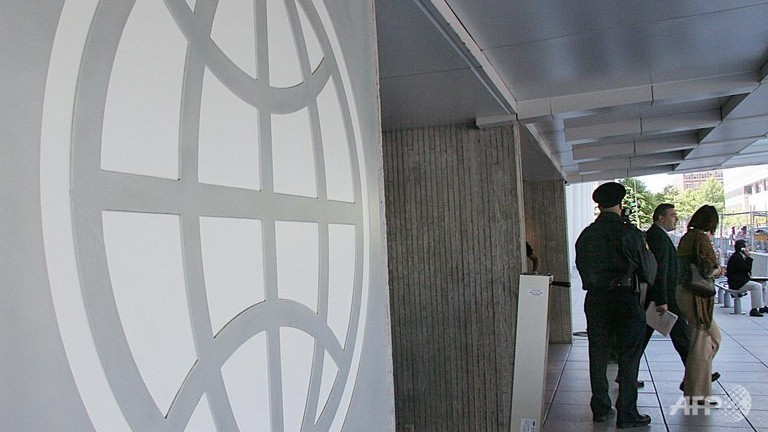World Bank lowers East Asia growth forecast to 7.1%

File photo: The entrance to the World Bank building in Washington, DC. (AFP/File - Karen Bleier)
SINGAPORE: The World Bank on Monday lowered its 2013 growth forecast for East Asian developing countries to 7.1 percent and called for structural reforms to protect long-term expansion against financial volatility.
The estimate for this year's gross domestic product (GDP) growth is down from an earlier forecast of 7.8 percent made in April, and lower than the 7.5 percent growth recorded in 2012 and 8.3 percent in 2011.
Regional GDP growth in 2014 and 2015 was forecast at 7.2 percent for both years. Excluding China, the region is expected to grow 5.2 percent in 2013 and 5.3 percent in 2014.
The region is still the fastest growing in the world despite a slowdown in powerhouse China and a softening in middle-income economies such as Indonesia, Malaysia and Thailand this year, the bank said.
"East Asia-Pacific continues to be the engine driving the global economy, contributing 40 percent of the world's GDP growth -- more than any other region," said Axel van Trotsenburg, the World Bank's East Asia and Pacific Regional Vice President.
"With overall global growth accelerating, now is the time for developing economies to make structural and policy reforms to sustain growth, reduce poverty and improve the lives of the poor and vulnerable," he added in a statement.
The bank noted that in recent months speculation about the withdrawal of the US Federal Reserve's stimulus programme led to stock market sell-offs and currency depreciation in East Asia, hurting countries with large foreign participation in their financial markets.
"The Federal Reserve's decision to delay (a wind down of the stimulus) stabilised markets for now, giving countries a second opportunity to take measures to lower risks from future volatility," said Bert Hofman, World Bank East Asia and Pacific Chief Economist.
"Reducing reliance on short-term and foreign currency denominated debt, accepting a weaker exchange rate when growth is below potential, and building policy buffers to respond to changing global liquidity conditions are some of the ways that can help countries be prepared."
The impact of any US tapering on capital inflows in the region may also be offset by "Abenomics", Japan's new strategy to revive growth, which could increase Japanese investment in the region, the bank said.
"Structural reforms that will give people the opportunity to share in the gains of progress hold the key to future growth," said Hofman.
What the stars mean:
★ Poor ★ ★ Promising ★★★ Good ★★★★ Very good ★★★★★ Exceptional
Latest News
More News
- VLCA’s corporate governance mission (November 21, 2024 | 10:00)
- The promotion of ESG via banking (November 21, 2024 | 09:32)
- Standard Chartered committed to Vietnam’s financial success (November 21, 2024 | 09:24)
- Full ESG adoption the priority for Agribank (November 21, 2024 | 09:07)
- Banks entice youth with tech advances (November 21, 2024 | 08:00)
- Banks shaping the future as business advisors (November 20, 2024 | 21:00)
- ESG represents a shift towards sustainability for banks (November 20, 2024 | 13:00)
- GGGI supports Vietcombank’s debut of $80 million green bonds (November 20, 2024 | 11:20)
- SHB and the ESG journey: creating social value in every step (November 19, 2024 | 15:00)
- Banking sector contributes to ESG, green growth, and sustainable development (November 19, 2024 | 14:42)



















 Mobile Version
Mobile Version